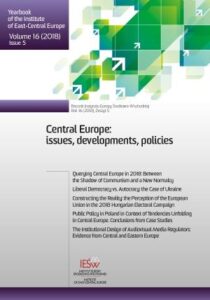ORCID: Karolina Sobczak-Szelc: 0000-0003-1785-0645
Pages: 177-199
Edition: Lublin 2018
DOI: --
Citation method: Karolina Sobczak-Szelc, ‘Looking for Environmental Migrants in the Receiving Country – the Example of Migrants from Chosen Countries of North Africa in Poland’, Yearbook of the Institute of East-Central Europe, Vol. 16, No. 5, 2018, pp. 177-199.
Abstract:
The majority of the research investigating environmental migration is focused on source areas and little on host countries. As a consequence, a common approach to finding environmental migrants in the destination country is lacking. The aim of this paper is to present a mixed method with a quantitative (survey) and qualitative part (in-depth interviews) that was used to find environmental migrants in Poland. The research was carried out among Egyptians, Moroccans, and Tunisians. For research purposes, the definition of an environmental migrant was extended to three generations. Therefore, under investigation were the motivations and history of migration of the migrant himself, and his father and grandfather as well. The results show that environmental migrants in the destination country are a hard-to-survey population, as they comprise a group that is hard to sample, identify, find or contact, get to cooperate, and to interview. It was found, moreover, that limited knowledge regarding their father’s and grandfathers’ migration history and motivations limited the possibility to analyse how environment influenced the migration decisions of previous generations. The migration decision of the investigated migrants was influenced by other factors, such as education, marriage, or looking for a job. Although none of the investigated persons was an environmental migrant, the Moroccan interviewees mentioned the environment as a factor influencing the departure of people from their areas of origin. In the case of Egypt, however, it was difficult to link the migration decision to environmental factors.

PDF: Download